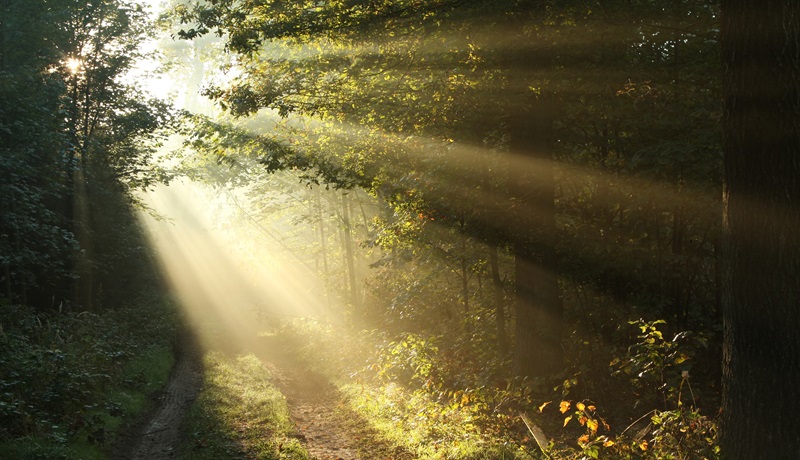橡樹精油與純露 Quercus 在芳香療法與自然療法的應用潛力評估介紹 - NAHA 2023 冬季期刊

目錄

對橡樹的敬畏 - NAHA 2023 冬季期刊
由莎倫·弗爾塞托·查普曼(Sharon Falsetto Chapman)擔任作者,擁有榮譽學士學位 NAHA認證專業芳香療法師®
威榭樹(Quercus spp.)在歷史悠久的景觀中佔據主導地位。在英格蘭長大,它是我童年時代景觀中熟悉的一部分,每年秋天橡樹及時落下的橡子總是標誌著季節的轉變。橡樹(Quercus spp.)是樹木世界中溫和的巨人,它們守護著幾個世紀以來的兒童遊戲、騎士比武、情侶約會,卻從未洩漏一次秘密。
但如果它們能講述故事,橡樹(Quercus spp.)肯定有驚人的故事可說。它們可以活上數百年,可以追溯到時間開始的幾乎時刻,並且是生態系統的重要組成部分。它們可能不會產生精油,但橡樹(Quercus spp.)被用作花精、純露和CO2提取物,並被草本學家用於許多常見健康問題。
在這篇文章中,我將帶您回到開始,穿越時間和傳統,深入探究橡樹(Quercus spp.)的生態根源,並發現不同的橡樹(Quercus spp.)品種如何在當今世界中使用。古老的橡樹(Quercus spp.)絕對有故事可說。
橡樹的植物學翻譯
(Quercus L.)
橡樹(Quercus):儘管有許多橡樹(Quercus spp.)的物種,但橡樹(Quercus)被認為是對英國橡樹(Q. robur)的拉丁名稱的引用。它也可能是對希臘詞語kerhaleos(意為粗糙)或kakhrus(意為橡子)的引用。也許我最喜歡的翻譯假設意義是可能來自“一種未知的早期歐洲語言”。
robur(ROH-bur):(英文)橡樹。
alba(AL-ba):白色的(如白橡樹)。
L.:Linnaeus的縮寫,指的是卡爾·林奈(Carl Linnaeus)(同義詞,卡爾·馮·林奈)。植物學名稱要求植物種的原始作者的名稱,因此在橡樹(spp.)之後使用L.作為縮寫。
Fagaceae(Fag-A-see-ee):被稱為橡樹或山毛櫸植物科。
植物學概況
植物學名稱:橡樹(spp.)L.
同義詞:根據具體物種不同而異:英國橡樹、紅橡樹和白橡樹是一些最受歡迎的物種。參見植物概況部分。
植物科:殼斗科(橡樹/山毛櫸)。
植物生長區:英國橡樹(Q. robur);紅橡樹(Q. rubrus);白橡樹(Q. alba)。
植物分佈
英國橡樹(Quercus robur)原生於北半球的森林。整個物種可以在五大洲找到,總計有435個不同的物種。 然而,約60%的橡樹(Quercus spp.)位於美洲。 物種的確切屬將決定哪種橡樹生長在哪個地點。
花園概況
如何種植橡樹:雖然我自己沒有嘗試過,但有幾個來源指出,橡樹(Quercus spp.)從橡子種子發芽很容易。 只需將橡子種植在乾燥的、沙質或潮濕肥沃的土壤中即可。
有利於授粉者和野生動植物:橡樹(Quercus spp.)物種支持各種生物,如真菌、黃蜂、鳥類和動物。
歷史概況
數個世紀以來,橡樹(Quercus robur)被視為一種神聖的樹木,特別是對古代德魯伊來說。 北歐和凱爾特神話都將橡樹(Quercus spp.)解釋為穩定和持久的象徵。據說,古希臘神祇宙斯和羅馬神祇朱庇特也與橡樹(Quercus spp.)有關聯。
現代應用:當然,橡樹(Quercus spp.)的木材也是建筑和家具的主要來源。它的木材強度被認為是至關重要的,並被用於造船和建設。
香味概況
橡樹(Quercus spp.)的香味可以描述為泥土般的、木質的或綠色的。儘管橡樹(Quercus spp.)沒有產生精油,但橡樹(Quercus spp.)的提取物具有淡淡的氣味。
植物療效概況
在傳統草藥學中,橡樹(Quercus spp.)被用於治療胃腸問題和發炎。 最新研究表明,橡樹(Quercus spp.)中的一些化學成分具有抗氧化、抗菌和抗病毒特性。
安全概況
通常,橡樹(Quercus spp.)被認為是安全的,尤其是在按建議劑量使用時。 過量使用可能會導致胃腸不適或其他輕微反應。
橡樹整體介紹
橡樹(Quercus spp.)無論在歷史上還是現代,都有著深遠的影響力。從其神聖的象徵意義到實用的應用,橡樹(Quercus spp.)持續吸引著我們的注意力。無論是作為香料、草藥還是美麗的樹木,橡樹(Quercus spp.)無疑是自然界中令人著迷的成分之一。
參考資料
1. iPlantCollaborative™ website, Taxonomic Name Resolution Service (TNRS) v5, Quercus search, accessed from: https://tnrs.biendata.org/
2. Bayton, Ross, 2020, The Gardener’s Botanical, US: Princeton University Press, p.251.
3. Harrison, Lorraine, 2012, Latin for Gardeners, UK: Quid Publishing, p.178.
4. Latin is Simple website, albus/alba/album, accessed from: https://www.latin-is-simple.com/en/vocabulary/ adjective/619/
5. Shade, Kevin, n.d., The Early Years of Plant Taxonomy, accessed from: https://studylib.net/ doc/7250845/the-early-years-of-plant-taxonomy
6. Science Direct website, Fagaceae, accessed from: https://www.sciencedirect.com/topics/immunology-and-microbiology/fagaceae#:~:text=Oak%20family%20 (Latin%20for%20the%20beech%20tree).
7. Britannica website, List of Plants in the Family Fagaceae, accessed from: https://www.britannica.com/topic/list-of-plants-in-the-family-Fagaceae-2075383
8. Various resources.
9. Oldest.org website, The Oldest Oak Trees, accessed from: https://www.oldest.org/nature/oldest-oak-trees/
10. National Park Service website, Species Spotlight: The Oaks (Quercus spp.), accessed from: https://www.nps.gov/ articles/species-spotlight-oaks.htm#:~:text=Stretching%20 Across%20Time%20and%20Space,%2C%20insects%2C%20 birds%20and%20mammals.
11. North Carolina Extension Gardener website, Quercus robur, accessed from: https://plants.ces.ncsu.edu/plants/ quercus-robur/
12. The Morton Arboretum website, English Oak (Quercus robur), accessed from: https://mortonarb.org/plant-and-protect/trees-and-plants/english-oak/
13. Britannica website, English Oak Tree, accessed from:
https://www.britannica.com/plant/English-oak
14. Scientific American, Cavander-Bares, J., Manos Paul S., and Andrew l. Hipp, Vol. 323 No.2 (August 2020), Ascent of the Oaks [How Oak Trees Evolved to Rule the Forests of the Northern Hemisphere], doi:10.1038/ scientificamerican0820-42 accessed from: https://www.scientificamerican.com/article/how-oak-trees-evolved-to-rule-the-forests-of-the-northern-hemisphere/
15. Sedona Red Rock News website, Perry, Tim, January 1, 2023, Saving Sedona’s Signature Oaks from Climate and Cultural Change, accessed from: https://www.redrocknews. com/2023/01/01/saving-sedonas-signature-oaks-from
climate-and-cultural-change/
16. Loftis, David L., and Charles E. McGee (Ed.), 1992, Oak Regeneration: Serious Problems, Practical Recommendations; Symposium Proceedings. US: Tennessee, pp.14-16.
17. Abrams, Marc D. “Fire and the Development of Oak Forests.” BioScience 42, no. 5 (1992): 346–53. https://doi. org/10.2307/1311781.
18. Chevallier, Andrew, 2016, Encyclopedia of Herbal Medicine, 3rd Edition, US: DK Publishing, p.260.
19. Treehugger website, Nix, Steve, 2021, Guide to Common Oak Trees of North America, accessed from: https://www. treehugger.com/guide-to-common-oak-trees-of-northamerica-1343226
20. Harrison, Lorraine, 2012, Latin for Gardeners, UK: Quid Publishing, p.174.
21. Thorn and Claw website, Oak Tree Mythology and Folklore, accessed from: https://www.thornandclaw.com/ blogs/news/oak-and-acorn-symbolism#:~:text=In%20
both%20Norse%20and%20Celtic,the%20promise%20of%20 new%20beginnings.
22. Taib M, Rezzak Y, Bouyazza L, Lyoussi B. Medicinal Uses, Phytochemistry, and Pharmacological Activities of Quercus Species. Evid Based Complement Alternat Med.
2020 Jul 31;2020:1920683. doi: 10.1155/2020/1920683. PMID: 32802116; PMCID: PMC7415107.
23. Biolandes website, Oakwood 50%/TEC, accessed from: https://www.biolandes.com/en/product/oakwood-50-tec/
24. Perfumer Supply Company website, Oakwood Extract CO2, accessed from: https://perfumersupplyhouse.com/ product/oakwood-extract-co2/
25. NYU Langone Health website, Department of Surgery: Oak Bark, accessed from: https://froemkelab.med.nyu.edu/ surgery/content?ChunkIID=111708
26. Al Hawani, Israa & Aldhaher, Areej & Abdalzahra, Iman. (2020). A Biological Study on Quercus Bark as Antimicrobial Agent. Annals of Tropical Medicine and Public Health. 23. 10.36295/ASRO.2020.231109.
27. Diego Morales, Oak trees (Quercus spp.) as a source of extracts with biological activities: A narrative review, Trends in Food Science & Technology, Volume 109, 2021, Pages 116-125, ISSN 0924-2244, https://doi.org/10.1016/j. tifs.2021.01.029. (https://www.sciencedirect.com/science/ article/pii/S0924224421000285)
28. Scheffer, Mechthild, 2001, The Encyclopedia of Bach Flower Therapy, US: Healing Arts Press, pp.137-140
29. American Herbal Products Association’s Botanical Safety Handbook 2nd Edition, 2013, Quercus spp., US: CRC Press, pp.716-717.
30. Plant Therapy website, Oakwood Chip, accessed from: https://www.planttherapy.com/blogs/blog/november-oil-of-the month-reveal-oakwood-chip


